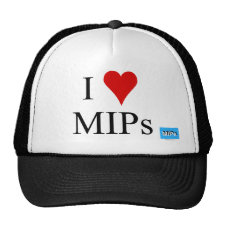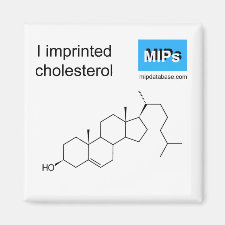
Authors: Yavuz H, Karakoç V, Türkmen D, Say R, Denizli A
Article Title: Synthesis of cholesterol imprinted polymeric particles.
Publication date: 2007
Journal: International Journal of Biological Macromolecules
Volume: 41
Issue: (1)
Page numbers: 8-15.
DOI: 10.1016/j.ijbiomac.2006.11.011
Alternative URL: http://www.sciencedirect.com/science/article/B6T7J-4MGM2RX-1/2/8fa6c13f44c1983870079dd53ecbddf5
Abstract: The aim of this study is to prepare cholesterol-imprinted polymeric particles. N-Methacryloyl-(l)-tyrosinemethylester (MAT) was chosen as the complexing monomer. In the first step, functional monomer MAT was synthesized by the reaction of l-tyrosine methylester and methacryloyl chloride and characterized by FTIR and NMR. Then, cholesterol was complexed with MAT in different mol ratios and the cholesterol-imprinted poly(2-hydroxyethyl methacrylate-N-methacryloyl-(l)-tyrosine methylester) [MIP] particles were synthesized by bulk polymerization. After that, the template molecules (i.e., cholesterol) were removed using chloroform. MIP particles were characterized by elemental analysis, FTIR, SEM, swelling tests and surface area measurements. Cholesterol adsorption experiments were performed in a batch experimental set-up. Adsorption medium was methanol or intestinal mimicking solution. Stigmasterol and estradiol were used as competing molecules in selectivity tests. Obtained results were as follows: swelling ratio of MIP and non-imprinted (NIP) particles were 60.8% and 44.1% in water. With the increase in the amount of MAT in the polymerization medium, incorporation of MAT was increased (16.6-78.0 μmol/g). SEM photographs showed the surface roughness and porosity. Specific surface area of NIP and MIP particles were found as 19.2 and 31.5 m2/g, respectively. Template molecules (i.e., cholesterol) were removed from the polymer structure in the ratio of 76-84% of the initial concentration. Cholesterol adsorption increased with the increase in cholesterol concentration up to 1.5 mg/mL. MIP particles prepared using higher amounts of cholesterol exhibit significantly higher capacity to the NIP particles (i.e., control polymer). MIP particles were 3.09 and 3.60 times selective with respect to the stigmasterol and estradiol, respectively. Reusability of MIP particles was also investigated. MIP particles showed negligible loss in the cholesterol adsorption capacity after five adsorption-desorption cycles with the same adsorbent
Template and target information: cholesterol
Author keywords: molecularly imprinted polymers (MIP), Cholesterol imprinting, affinity binding



Join the Society for Molecular Imprinting

New items RSS feed
Sign-up for e-mail updates:
Choose between receiving an occasional newsletter or more frequent e-mail alerts.
Click here to go to the sign-up page.
Is your name elemental or peptidic? Enter your name and find out by clicking either of the buttons below!
Other products you may like:
 MIPdatabase
MIPdatabase









